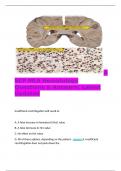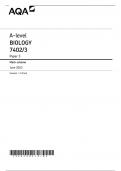Tentamen (uitwerkingen)
ASCP MLS Hematology Questions & Answers; Latest Updated Insufficient centrifugation will result in: A. A false increase in hematocrit (Hct) value B. A false decrease in Hct value C. No effect on Hct value D. All of these options, depending on the pati
- Vak
- Instelling
ASCP MLS Hematology Questions & Answers; Latest Updated Insufficient centrifugation will result in: A. A false increase in hematocrit (Hct) value B. A false decrease in Hct value C. No effect on Hct value D. All of these options, depending on the patient - Answer A. Insufficient centrifu...
[Meer zien]





